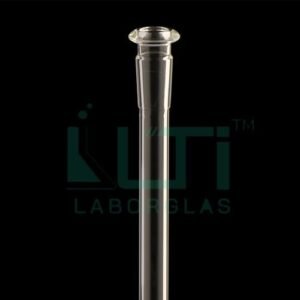| Part no. | NS SIZE | Pack Qty. |
| 1830-7PTF | 7/16 | 10 |
| 1830-10PTF | 10/19 | 10 |
| 1830-12PTF | 12/21 | 10 |
| 1830-14PTF | 14/23 | 10 |
| 1830-19PTF | 19/26 | 10 |
| 1830-24 PTF | 24/29 | 10 |
| 1830-29 PTF | 29/32 | 10 |
| 1830-34 PTF | 34/35 | 10 |
Here are potential uses for a solid PTFE stopper:
- Chemical Resistant Sealing: PTFE is highly resistant to a wide range of chemicals, acids, and bases. A solid PTFE stopper is commonly used to seal containers in laboratory settings where resistance to chemical interactions is crucial.
- High-Temperature Applications: PTFE exhibits excellent thermal stability, making it suitable for applications involving high temperatures. A solid PTFE stopper can be used in environments where other materials might degrade or lose their properties.
- Inert Sample Storage: PTFE’s inert nature makes it suitable for sealing containers used for storing samples in their original state without the risk of contamination or chemical reactions.
- Laboratory Glassware Sealing: PTFE stoppers can be used to seal openings in laboratory glassware, such as flasks or test tubes, providing a secure and inert closure.
- Gas Handling: Due to its low permeability, a solid PTFE stopper can be used to seal containers that store or transport gases without the risk of gas diffusion.
- Biotechnology and Pharmaceuticals: In industries such as biotechnology and pharmaceuticals, PTFE stoppers are used for sealing containers holding sensitive substances due to their non-reactive nature.
- Nonstick Properties: PTFE is known for its nonstick properties, making it easy to insert and remove stoppers without sticking or adherence to the glassware.
- Electrochemical Applications: PTFE’s chemical resistance makes it suitable for applications involving electrochemical processes where other materials might react with chemicals present.
- Educational Demonstrations: In educational settings, solid PTFE stoppers may be used to demonstrate the properties of PTFE and its applications in laboratory work.
- Chemical Synthesis: PTFE stoppers can be employed in chemical synthesis processes, where the sealing material must remain inert to the reactants and products.








Reviews
There are no reviews yet.